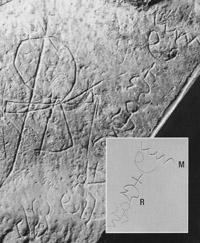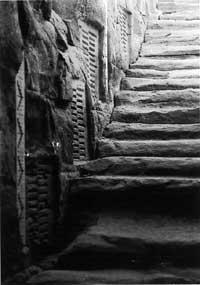History of an obelisk
1996/11/01 Ezpeleta Arenaza, Txema | Ruiz-Larrea, Isabel - Irakaslea eta ikertzaileaFisika Aplikatuko Saila II, EHU Iturria: Elhuyar aldizkaria
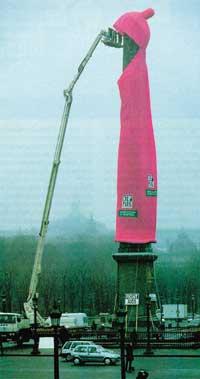
How did that obelisk reach Paris? Who built it? What is its symbolism? What did they use it for? How did they manage to transport this type of pedrisco and then place it standing? What way did the Egyptians use to extract the obelisk from the rock more than 3,000 years ago?
These were some of the questions I asked myself when I observed that enormous work. With curiosity, I looked for answers.
Some data on obelisks
After investigating in the library about obelisks, I found the following data that may be interesting: ‘Obelisk’, from the Greek obelisk, means ‘small spear’. At present there is the belief that the ancient Egyptians considered the obelisk as a false symbol representing Ammon. The god Ammon was the creator of the Earth.
According to Egyptian mythology, the first day of the creation of the world the Sun stood on a long stone. The prototype of obelisk probably arose in the Heliopolis, the city of the Sun. This symbol, unlike the pairs of obelisks outside the temples built in the sacred enclosures, was the only obelisk.
The obelisk was, in addition to a solid memory of verticality, an appeal of divine light and a giant talisman that served to scare the negative forces of the temple. The structure of the oldest obelisks in Egypt seems to be the following: they had drunk form and were formed by several limestone blocks. At the top and to finish the work a pyramid was placed.
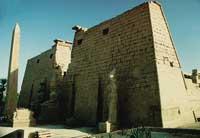
Monolithic obelisk slender in the Middle Empire (BC) 1987-1640) begin to appear and to be built by couples on the façade of the temples. On the faces of the obelisks were carved hieroglyphs corresponding to protocols and praise to the king who ordered the construction works. In some cases, in the pyramid was placed the image of the king covered by an alloy of gold and silver (called electrum).
All these details are useful, but often books cannot give us all the information we need. So I decided to travel to Egypt to better understand the origin of the obelisk.
Egypt seeks the origins of the obelisk
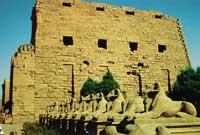
Egypt is a great desert whose main sources of wealth are linked to the Nile river that crosses the country.
Obelisk in Paris of the New Empire (BC) It was built in 1540-1075). At that time, the capital of the Empire was the city of Thebes, located on the banks of the Nile in the Egyptian Age. Today, the name of this city is Luxor and two of the most amazing temples of the New Empire remain in good condition: The temple of Luxor and that of Karnak. It is evident that all tourists have to see the two temples and that it deserves a visit.
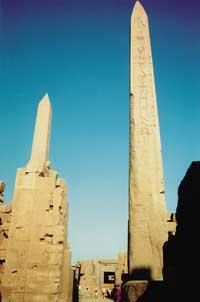
Construction of the Luxor Temple in Amenofis III (BC) 1417-1379) XVII. from the end of the dynasty to the 19th century by Ramses II (1279-1213). ended in the dynasty. The temple was made in honor of the trio of Thebes: Amon Ra, his wife Nout and his son Khonsou. At first, the facade had two pilons, in front of which there were six granite statues of Ramses II, two sitting and four standing. The standing statues located in the east were donated to France and are now in the Louvre Museum.
On the other hand, the façade was decorated with two symmetrically arranged pink granite obelisks. One of them, 25,03 meters high, and the other, 22,83 meters high and 230 tons of weight, was delivered in 1836 to the king of France Luis Felipe I by the then viceroy of Egypt Muhammad Ali Pasha. This is the Place de la Concorde in Paris. As can be seen, the current location has nothing to do with its origin.
Another important temple is located in Karnak, near Luxor. It was built in honor of grandmothers. In 1500, XVIII of the New Empire. Dynasty. The temple of Karnak has an avenue flanked by sphinxes. The sphinxes have ram heads and lion bodies. At the entrance to the temple there are two imposing pilons of stone. Inside the temple you can see the obelisks built at the time of Tutmose I and her daughter, Queen Hatsepsut.
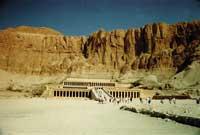
Tudela 1525-1512) the base of the obelisk is square, with a difference of 1.8 m, and its height and weight, 24 m and 143 tons respectively. The obelisk of the Hatsepsut queen (1479-1458), meanwhile, has a height of 29 m and a weight of 323 t. Both obelisks are full of hieroglyphic inscriptions.
At the base of the obelisk of the Breath it is indicated that the process of extraction of the monolith of the quarry lasted seven months. It took a similar time to extract the obelisk of Ramses II, since its dimensions and structure are very similar. In the surroundings of Luxor, however, there are no quarries. How did the granite stones get then? Where were the quarries?
Trip to the Valley of the Kings

When I still did not know how to answer the above questions, I took the journey. Crossing the Nile River, on the banks of Luxor, we discover the remains of the city of Thebes, former capital of the Empire. This territory is a desert and in its surroundings is the largest known necropolis ever in Thebes. Divided into two valleys, the Valley of the Kings and the Valley of the Queens host the tombs of the unforgettable Egyptian pharaohs.
In the valley of the Kings there is a single funeral temple built in honor of a woman: Temple of Queen Hatsepsut. Among the different ornamental inscriptions of the building you can see the images of the transport of an obelisk with fala along the Nile river that, as is evident, correspond to the obelisk of the temple of Karnak. The inscriptions also indicate the method used by the obelisks to make their journey through the river and its demolition. The Egyptians used the ground ramps to slowly tilt the obelisk and, finally, they managed to position themselves vertically.
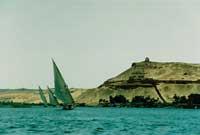
Thus, in search of the origin of the obelisk, we must trace the Nile River. As expected, after leaving behind the villages of Esna, Edfu and Kom Ombo on our journey, we will find the city of Asua, where there are famous granite quarries. We have finally found the quarries of obelisk extraction!
Asuan quarries and unfinished obelisk
In the quarries of Asuan you can see an unfinished obelisk. Due to its dimensions (30 m in length) it is considered to be built at the time of Queen Hatsepsut mentioned above. Some stairs allow the visitor to access the polished surface of the obelisk. The obelisk was abandoned because of the great crack they found there. It is not clear that this fissure was proper to the stone or that it was caused to leave the quarry. For one reason or another, that was the main reason for the suspension of the work and thanks to this we have a spectacular heritage of history.
Obelisk extraction procedure
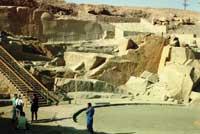
The extraction of the monolithic stone of these dimensions of the quarry seemed to have given great works (we know that it took about seven months), since, in the absence of explosives, they had to be done completely by hand. For this purpose, they had stone mazas and iron punches. And, of course, they worked tirelessly with enough staff.
However, the workers were very fast and, thanks to this, they advanced a lot of time. Once the rock was chosen for the extraction of the obelisk, the shape of the obelisk was drawn on its polished surface. The drawing of the surface of the rock was made by splashes of soaked strings and tied in paint. Once the lines were made, they made vertically a very deep rectangular hole in each vertex. Among the main holes of this type were alternating similar ones along the drawn line. Once all the holes were finished, they were introduced in the hollow wooden stakes that poured the water of the Nile until the wood had soaked. Then they only needed to wait a few days.
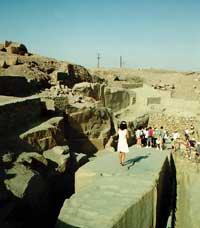
The cold of the night freezes the water and its volume increases considerably. This expansion generates strong tensions that cause the rock to break. The fracture occurs in the weakest point of the rock, right between the stakes. The breakage process could last for several days and meanwhile the operators were trying to have wet stakes before night.
As a result of this process, the rock that could be broken with the desired shape, but that was always toothed, so it was necessary to polish. To remove the leftover rock from the sides, the same procedure we just described was used, but in this case they should not be very careful when laying the stakes.
Therefore, once the surplus rock was removed, they could work the side faces and were facilitated access to the lower face. In this way, under the obelisk horizontal holes were made, in which the stakes were introduced, they were wet and after the night the obelisk was released.
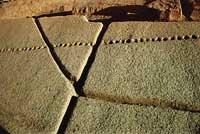
It is curious the method used for the extraction of the obelisk, especially when more than 3,000 years ago it was used.
In the end, then, I was able to complete the history of the obelisk: From the quarries of Asuan, the obelisk sailed to Luxor by the waters of the Nile. There were carved hieroglyphic inscriptions and then placed in the temple of Amon when Ramses II was king. In 1836 he was transferred to the Place de la Concorde in Paris. In it he is currently, as a silent witness of a culture that has already disappeared and is still remembered.

Gai honi buruzko eduki gehiago
Elhuyarrek garatutako teknologia



